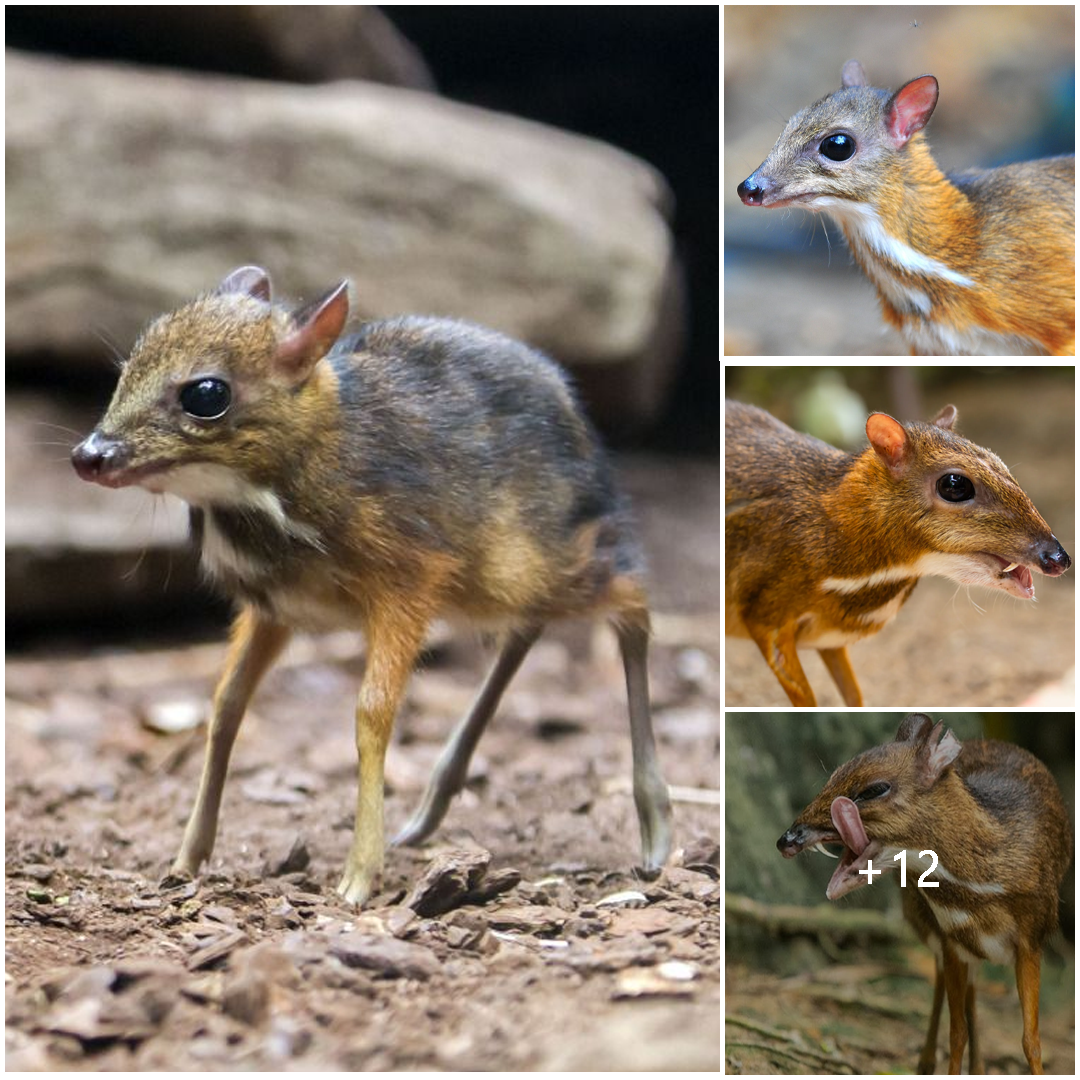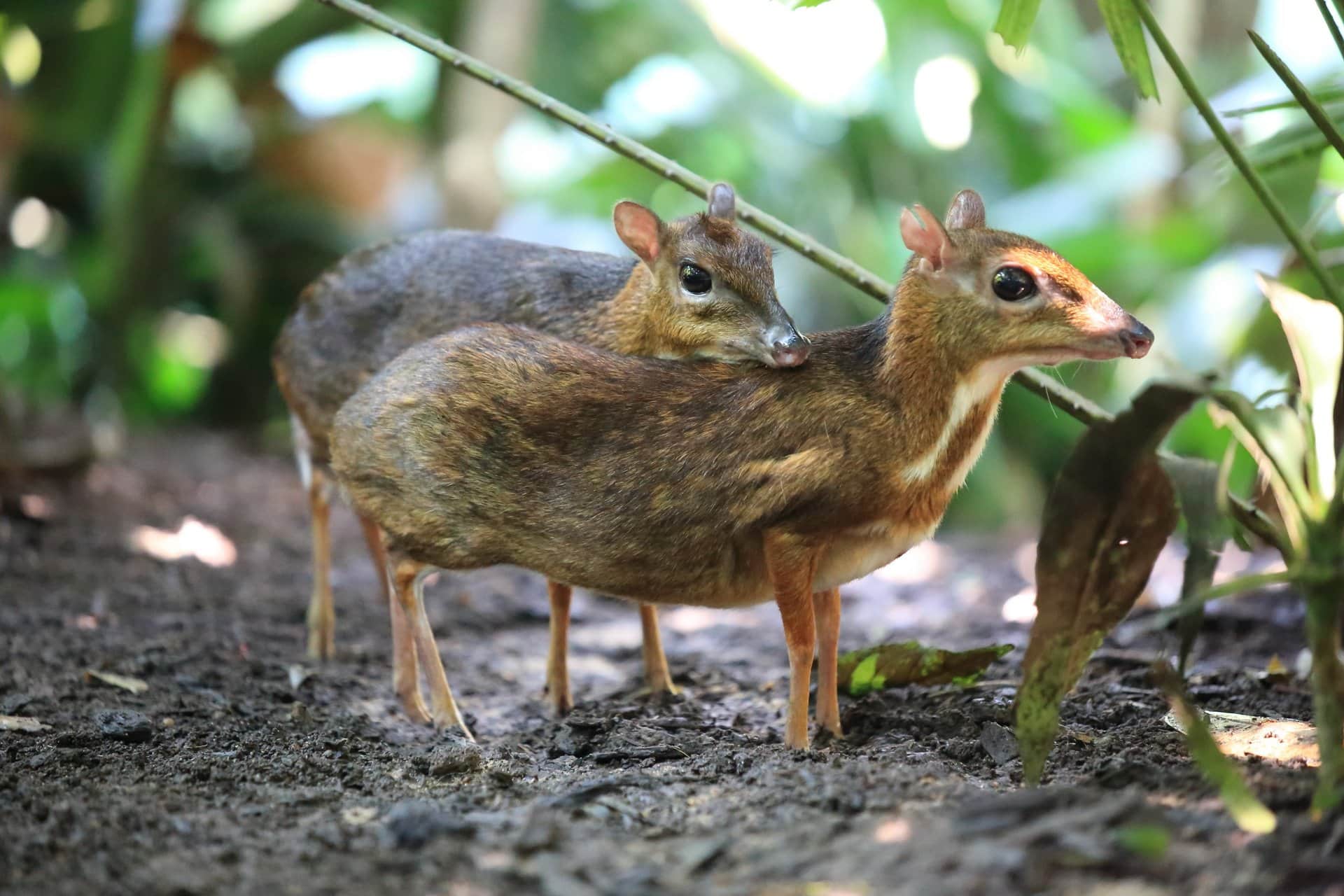
The Larger Malay Mouse Deer: A Fascinating Creature of Southeast Asia
Introduction: The larger Malay mouse deer, scientifically known as Tragulus napu, is a captivating and diminutive mammal found in the lush forests of Southeast Asia. Despite its name, it is not a true deer but rather belongs to the Tragulidae family, making it a distant relative of ungulates like deer and antelope. Renowned for its elusive nature and endearing appearance, the larger Malay mouse deer holds a unique place in the region’s biodiversity.

Appearance and Size: Measuring only about 18 inches (45 centimeters) in length and weighing between 2 to 5 kilograms, the larger Malay mouse deer is one of the smallest hoofed mammals in the world. It possesses a slender body, delicate legs, and a distinctive reddish-brown coat with white spots, blending seamlessly with the dense vegetation of its habitat. Its large, dark eyes and small, pointed snout contribute to its charming and innocent visage.
Habitat and Distribution: This enchanting creature is primarily found in the dense tropical forests and mangrove swamps of Southeast Asia, including countries such as Indonesia, Malaysia, and Thailand. It thrives in habitats with dense undergrowth and ample vegetation, providing cover and sustenance for its secretive lifestyle. However, due to habitat loss and fragmentation, populations of the larger Malay mouse deer face increasing threats to their survival.
Behavior and Diet: The larger Malay mouse deer is predominantly nocturnal, venturing out under the cover of darkness to forage for food and avoid predators. Despite its diminutive size, it is an agile and adept jumper, capable of navigating through dense vegetation with ease. Its diet consists mainly of leaves, shoots, fruits, and other plant matter found within its habitat, supplementing its nutrition with occasional insects or small invertebrates.
Reproduction and Life Cycle: Breeding patterns of the larger Malay mouse deer vary depending on factors such as food availability and environmental conditions. Typically, females give birth to a single fawn after a gestation period of around six to seven months. The young are precocial, able to stand and walk shortly after birth, and they rely on their mother’s care and protection during their early stages of development.
Conservation Status and Threats: Despite its enchanting allure, the larger Malay mouse deer faces numerous threats to its survival, primarily stemming from habitat loss, fragmentation, and poaching. Deforestation for agriculture, urbanization, and infrastructure development encroaches upon its natural habitat, diminishing available resources and disrupting crucial corridors for movement. Additionally, the illegal trade in wildlife poses a significant threat, with the larger Malay mouse deer sought after for its meat and perceived medicinal properties.
Conservation Efforts: Efforts to conserve the larger Malay mouse deer and its habitat are essential for ensuring its long-term survival. Conservation initiatives focus on habitat protection, restoration, and connectivity, aiming to safeguard vital ecosystems and mitigate the impacts of human activities. Community engagement and education play crucial roles in raising awareness about the importance of wildlife conservation and fostering sustainable coexistence between humans and wildlife.
Conclusion: The larger Malay mouse deer, with its endearing appearance and elusive nature, serves as a poignant symbol of the rich biodiversity found in the forests of Southeast Asia. Despite facing numerous challenges, concerted efforts to conserve its habitat and protect its populations offer hope for its continued existence. By recognizing the significance of this enchanting creature and taking proactive measures to safeguard its future, we can contribute to the preservation of our planet’s natural heritage for generations to come.






